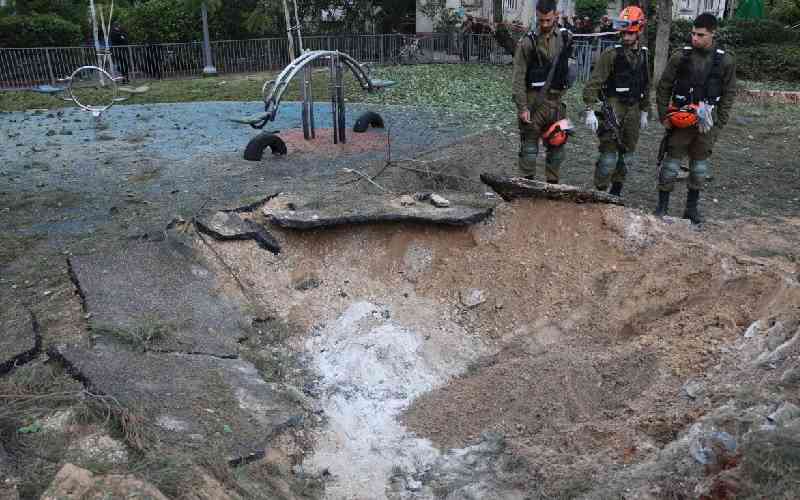By WAWERU MUGO
On the afternoon of December 23, 1980, a smartly dressed gentleman strolled into the spacious lobby of Norfolk Hotel, Nairobi.
He glanced furtively at the surroundings and then walked up to the reception. Could he get a room?
“No problem,” said the receptionist. Room 203 was free. But he refused to take it, saying he wanted a less noisy room.
The man then examined Room 7, located above the dining room, and was happy with it. He placed a Maltese passport on the counter as he was checked in. Muradi Aksali was booked in and wished a happy stay. But the man was using a fake passport.
His true identity was Qaddura Mohammed Abd-El-Hamid, a Moroccan terrorist who worked for the notorious Popular Front for the Liberation of Palestine, PFLP.
Aged 34, Abd-El-Hamid had first joined Al-Fatah, a Palestinian organisation formed in the 1950s, when still in his twenties. Rejecting the legitimacy of the state of Israel, Al-Fatah was more of a wing of the Palestinian Liberation Organisation.
Abd-El-Hamid first did some dirty jobs for the group before graduating for missions overseas, including one in Europe in 1973 for PFLP. He used several aliases including Muhammad Haj Quddu, according to details later released by the government. Now, he was at the Norfolk with a dangerous mission: to bomb it and cause maximum casualties.
Four years earlier, Kenya had helped Israel to free hostages held by PFLP at Entebbe, Uganda. The outfit’s leadership had then decreed that the country must be punished for that.
Abd-El-Hamid was later joined by a woman who “spoke in a German accent,” according to witnesses. He rarely left his room, and declined any housekeeping.
It would appear that somehow, he gathered enough material to make a powerful explosive. Some of it may have been brought in by his German accomplice.
For nine days, he worked meticulously, putting together the explosive device that would devastate the hotel on December 31, the day he left. No one suspected anything.
“At just about midday on December 31, he ran down the wide carpeted staircase from his room on the first floor of the western wing, walked out past the reception counter and was never seen again,” said an account by the hotel.
His bills remain unpaid.
Leaving the lobby, he turned left, strolled down Harry Thuku Road, hurried across University Way and disappeared among the sea of humanity within the city. He then took a car to Jomo Kenyatta International Airport.
Stay informed. Subscribe to our newsletter
That evening, guests at the hotel were in a good mood. With a kaleidoscope of nationalities gathered for dinner, it was the perfect place to make new acquaintances, wine and dine. And the New Year! It was only a few hours away.
They settled behind tables steaming with the best food money could buy.
And then, at 8.30pm, boom! A sudden flash of light lit up the night, followed by a thunderous blast. People outside were hurled onto pavements. A gush of wind lifted pricey furniture and thrust them against the crumbling walls. Diners’ clothes were vapourised.
Patrons choked in smoke and dust. The front of the hotel was reduced to a charred shell. “I was sitting in the dining room ready for dinner. The room was three-quarters occupied,” said a guest, Joe Torch, after surviving the blast. His food and table were blown away.
“There was screaming and everyone was scared.”
Another survivor, Christina Dean, told The Standard: “There were people screaming.” When she waded through the debris and out by the kitchen door, she found cars had their windscreens shattered, indicating the size of the blast.
“I found myself without my dress. I don’t know what happened to it.”
Donna Quinn, from the US, said she thought she was dreaming and had trouble breathing.
Her husband said: “I then heard a big wind blowing under the table. There was great light and fire.”
Falling debris
They compared the blast to a nightmare. “I might have screamed or something,” said Richard Solove, a real estate developer who was visiting Kenya from Colombus, Ohio. “The whole thing seems to have been over in five seconds.”
Charred wood, twisted metal and baked bricks littered the scene. The final death toll was given as 20, and nearly 100 injured. The destruction could have been worse had the fire reached the storeroom that held gas cylinders. It was put out hours after the blast.
People suffered horrific injuries caused by falling debris and a fire that gutted the western wing, causing damage estimated at Sh10 million.
A dent toward the end of a heavy-duty steel roofing beam showed detectives the location of the explosive device. It was in Room 7. It was only then that detectives realised why he so desperately wanted the room and rejected others. It was above the dining room and targeted at the people below.
Like Westgate, Norfolk was a high value target. It was frequented by the affluent and the mighty, from movies stars, astronauts to presidents. Among its guests since it opened in 1904 were Sir Winston Churchill and Theodore Roosevelt, former British PM and US president respectively. Along with Hilton Nairobi, they were the hotels of choice for high flyers and foreigners. Most of those injured or killed in the terror attack were not Kenyans.
Police were caught unawares. However, there was hardly any backlash against the people in charge, which included commissioner of police Ben Gethi and Internal Security Minister GG Kariuki.
As investigations started, one of the foremost actions by police was to contact big hotels to ask for names of tourists booked there. Within hours, the authorities had identified him as Abd-El-Hamid. But it was too late.
Unbeknown to police, the guest in Room 7 had already left the hotel without checking out.
At 2.30pm that afternoon, he boarded Kenya Airways Flight 358 bound for Jeddah, through Khartoum. That was six hours before the explosion.
A passenger manifest later revealed details of his escape using a ticket booked by a Mrs Alksay. It was speculated that Alksay was the woman who visited him at the hotel.
It was later to be established that the terrorists were avenging Kenya’s assistance to the Israeli Defence Forces when they outsmarted PFLP terrorists in 1976.
On June 27 that year, terrorists belonging to PFLP and the German Revolutionary Cells had hijacked an Air France jet and forced it to land in Entebbe, Uganda. It had 248 people on board, many of them Israelis.
As the terrorists gave a string of demands, the Israelis decided to raid the airport, grab the hostages, kill the terrorists and take off. But there was a problem.
Israel is thousands of miles away. The Israelis needed a friendly nation as a base to plan the attack, gather intelligence, provide medical help for injured hostages or soldiers, and refuel their planes. That help was offered by Kenya.
The lightning strike on Entebbe rescued the hostages, killed eight terrorists and destroyed Uganda’s fighter MIG jets on July 4. Israeli planes refueled in Nairobi after the successful rescue mission.
The Norfolk incident left the government embarrassed as it issued “tough” statements that it would not condone terrorism.
“Meanwhile, strict measures will be taken to further tighten security requirements and it is hoped that members of the public, including visitors, will understand and co-operate,” was all the government could say.
 The Standard Group Plc is a
multi-media organization with investments in media platforms spanning newspaper
print operations, television, radio broadcasting, digital and online services. The
Standard Group is recognized as a leading multi-media house in Kenya with a key
influence in matters of national and international interest.
The Standard Group Plc is a
multi-media organization with investments in media platforms spanning newspaper
print operations, television, radio broadcasting, digital and online services. The
Standard Group is recognized as a leading multi-media house in Kenya with a key
influence in matters of national and international interest.
 The Standard Group Plc is a
multi-media organization with investments in media platforms spanning newspaper
print operations, television, radio broadcasting, digital and online services. The
Standard Group is recognized as a leading multi-media house in Kenya with a key
influence in matters of national and international interest.
The Standard Group Plc is a
multi-media organization with investments in media platforms spanning newspaper
print operations, television, radio broadcasting, digital and online services. The
Standard Group is recognized as a leading multi-media house in Kenya with a key
influence in matters of national and international interest.







